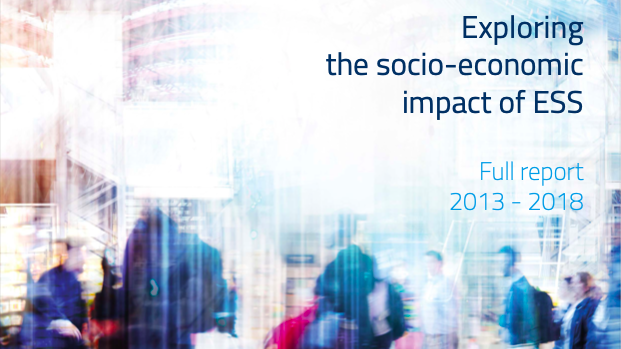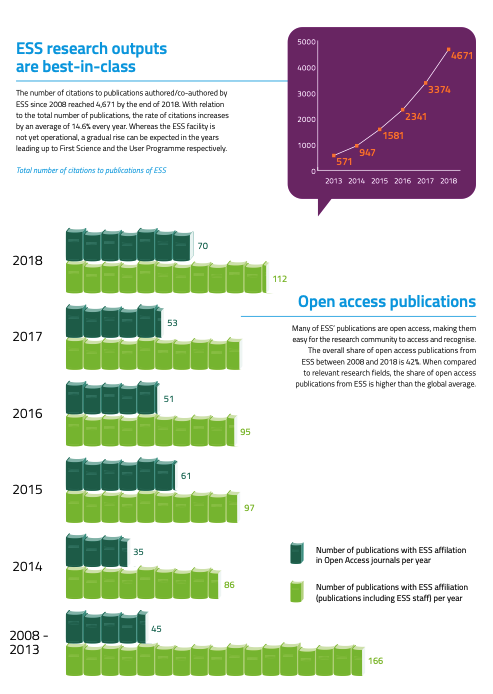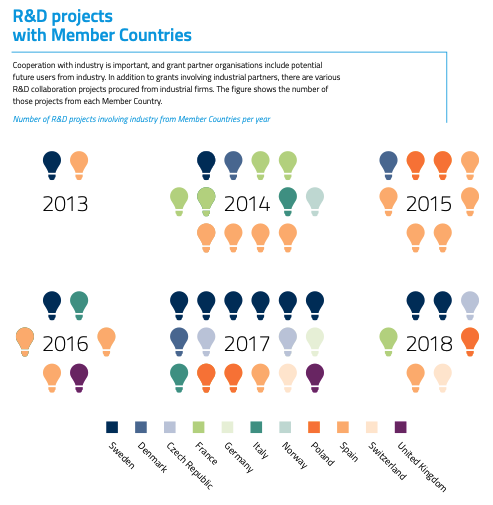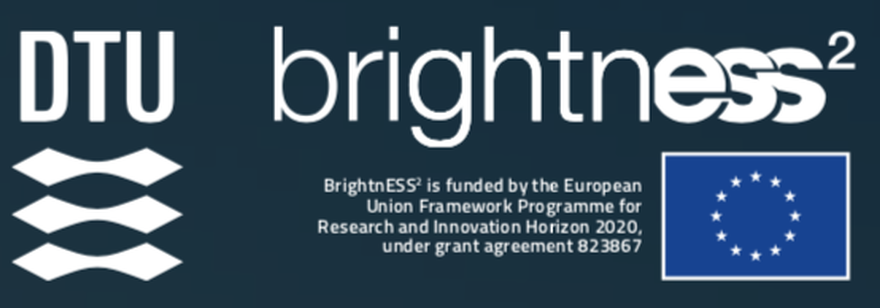ESS Socio-Economic Impact Report 2013-2018 available for download

This report is the first, early attempt to benchmark the socio-economic impact (SEI) of the European Spallation Source ERIC (ESS) as a civil construction project, a ground breaking scientific and technical project, and a future scientific user facility. The assessment period of 2013-2018 represents the first six years of the construction of ESS.
 |
This report was initiated and supported by the Horizon 2020 BrightnESS² project, and is a deliverable of work package 5. The report was developed in cooperation with the Center for Technology and Entrepreneurship at the Technical University of Denmark (DTU). Using innovative methodologies designed specifically for research infrastructures (RIs), the report showcases the early evidence of the socio-economic impact of ESS based on impact pathways that include publications, in-kind collaborations, employment, safety, technological innovation, procurement, public outreach and many others. This early SEI pilot, undertaken during ESS’ Construction Phase and assessing the years 2013-2018, marks it as a pioneering document among European RIs, which share the common responsibility to maximise their societal impact by enabling scientific discovery.
Embedded in the ESS vision and mission statement is the goal to achieve not only scientific breakthrough, but also to generate a wide range of societal and economic impacts through research activities, public dissemination of knowledge, reinforcement and extension of scientific networks, societal outreach, promotion of economic growth in local regions, procurement of innovative technologies, and research collaborations with scientific organisations and with industry. The impacts of these activities are expected to be evident directly on the Member Countries and to extend indirectly across many additional countries and regions in the long run. The ESS SEI assessment framework, thus, has the potential to be adopted and adapted by other European RIs according to their own scientific, economic, and political context.
This report is the first, early attempt to benchmark the socio-economic impact of ESS as a civil construction project, a ground breaking scientific and technical project, and a future scientific user facility. The assessment period represents the first six years of the construction of ESS, and is therefore heavily weighted toward the impacts of ESS as a European infrastructure project. However, the organisation’s first clear indications of scientific impact were already emerging in this period and are therefore included. ESS works with a singular focus on achieving its four strategic objectives, which serve as the structure for this report. Establishing early benchmarks for these objectives, even when based on only faint signals, is an important input to ESS’ stakeholders, including those tasked with governing ESS and managing the organisation’s trajectory through its planned phases of development and operation.
 |
ESS is of course not alone in making such assessments. Establishing meaningful performance metrics across research infrastructures is a European-wide endeavour that provides the context for this report. This ESS SEI pilot is part of an ongoing effort to establish and refine a standard set of indicators and best practices to measure and evaluate the impact of the many different types of RIs in Europe. For ESS, that process began as work within the EU project BrightnESS (2015-2018), but the primary methodological foundations for this report can be found in two 2019 reports published by the OECD and ESFRI, respectively. These reports proposed the first common frameworks for the SEI assessment and performance monitoring of Europe’s research infrastructures and represent the state-of-the-art. Several of the indicators used to contribute to the assessment of ESS’ strategic objectives, along with the means and methods to measure them, have therefore been selected on this basis.
 |
This report also reflects recent projects aimed at refining and expanding the complementary frameworks proposed by the OECD and ESFRI. The EU has given its support to two contemporaneous Horizon 2020 projects, ACCELERATE and RI-PATHS, whose outcomes will help to further refine how socio-economic impact should be assessed for research infrastructures like ESS. This ESS SEI report, while created under BrightnESS², has been undertaken with full awareness of, and within the context of, this parallel work. The authors of this report have made contributions to those projects, while those projects’ interim findings have fed into the methodology of this report.
Finally, it is important to underscore that while this SEI pilot report recognizes the importance of aligning to the emerging standards for the assessment of the socio-economic impact of research infrastructures, it remains that those standards are sometimes an odd fit for a scientific organisation during the first years of its construction phase. As ESS matures toward steady-state operations, the applicability of certain indicators, and the strength of the data collected to measure them, will mature in parallel to the facility’s and the organisation’s planned phases of development and operation. For the moment, however, ESS offers this facility-side snapshot of where the organisation’s SEI stands through 2018, and the impacts that can be expected to accumulate year over year.
Please download the report here. |
|
For the abridged report brochure published in December 2020, please visit this page. |


